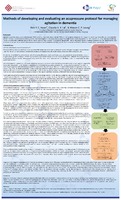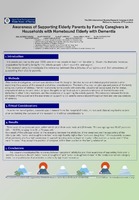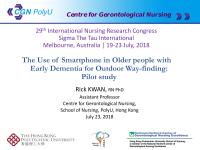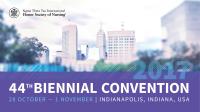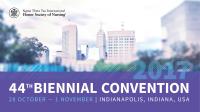| dc.description.abstract | <p>Session presented on Saturday, July 26, 2014:</p>
<p><strong>Background:</strong> Agitation is prevalent among people with dementia (PWD) in nursing homes. It frustrates both the PWD and their caregivers. Acupressure is a complementary therapy whose effect can be explained by different theories, such as the meridian theory in traditional Chinese medicine. Preliminary studies supported its effectiveness in reducing agitation on PWD. However, acupressure is a multiple modality therapy that can comprise various different types of intervention components. There is a dearth of evidence to support which intervention components to use and to explain their effect. The purposes of this paper are to discuss, using an actual example, how an acupressure protocol was developed according to evidence-based procedures and how its effect was evaluated by an experimental study.</p>
<p><strong>Methods/Design: </strong>Methods of developing an acupressure protocolThis intervention protocol was developed according to the 2008 Medical Research Council guideline for developing complex interventions. The intervention was developed based on three methods: a literature review, the Delphi process and a pilot study. The literature review identified articles discussing the theories possibly connecting the use of acupressure and agitation. Evidence relevant to the use of acupressure on agitation in PWD was retrieved by a systematic review from the major databases. The literature review highlighted the existing evidence and developed theories to explain why acupressure might work. The relevant information retrieved from the literature was then organized for the subsequent Delphi process. In the Delphi process, a panel of six TCM experts specialized in acupuncture was consulted. The Delphi process first asked the panel experts to suggest the intervention components (i.e. the selection of acupoints), the intervention dosage, and the rationales for the selection of components. They were then asked to give suggestions with reference to the information provided in the literature and their own professional knowledge and experience. Finally, consensus on the procedural details and possible effective components of the intervention protocol was reached through three cycles of stepwise anonymous discussion. Although consensus on the intervention dosage (i.e. the duration and frequency) was reached in the Delphi process, the narrative comments from the Delphi process showed that the dosage was based on the experts' experience only because TCM theory does not discuss dosage. A pilot study was performed to provide supporting evidence for the dosage selection. In the pilot study, within the range of dosage suggestions given in the Delphi process, the effect of acupressure was compared among various dosages. The dosage that showed the largest and most significant effect was used in the intervention protocol. Finally, all the details of the intervention protocol were confirmed after the three methods. The intervention protocol was then evaluated in the subsequent experimental study. Methods of evaluating an acupressure protocolThe experimental study was a multicenter, assessors-participants-statistician-blinded, parallel group, randomized controlled trial conducted in Hong Kong nursing homes. We targeted PWD over 65 years old in nursing homes, who were experiencing agitation. We invited the participation of 157 nursing homes registered under the Hong Kong Social Welfare Department. 21 nursing homes agreed, and 12 were selected randomly to participate in the study in order to recruit an adequate number of participants (estimated to be 99) to demonstrate a significant effect difference (i.e. f = 0.27) with a power of 0.8 and a significance level of 0.05 among the three groups. All residents in the 12 nursing homes (n=2014) were primarily screened by the nursing home staff. After the screening, the staff compiled a list of potential participants (n=214). With the consent of the participants and/or their families, we further screened all potential participants against the selection criteria. 121 participants were finally recruited. All participants were assigned by permuted block randomization into three groups in a 1:1:1 ratio. In the acupressure group (AG), participants received acupressure at the Fengchi (GB20), Baihui (GV20), Shenmen (HT7), Niguan (PC6) and Yingtang (EX-HN3) acupoints. In the sham-acupressure group (SG), participants received pressure on five non-acupoints. In the usual-care group (UG), participants received no intervention apart from the care provided by the nursing homes. Participants assigned to the SG and UG received free acupressure, like that received by the acupressure group, as compensation after completion of the study. The main outcomes being evaluated were agitation and stress. The effect of acupressure on moderating the participant's use of psychotropic drugs was also monitored. Agitation was measured by the Cohen-Mansfield Agitation Inventory (CMAI). Stress was measured by salivary cortisol. The measurements were carried out four times: before the commencement of the intervention (T0), the first week after completion of the intervention (T1), the third week after completion of the intervention (T2), and the sixth week after completion of the intervention (T3). To ensure the quality of the intervention implementation and data collection, all research personnel, those conducting the intervention, and data collectors attended an eight-hour training course provided by two of the six members of the TCM expert panel. All personnel conducting the intervention took a skill examination administered by one of the six members of the TCM expert panel. All data collectors and research assistants had to pass the skill examination stipulated by the researchers before they could become involved in this study. The training content for the personnel conducting the intervention strictly followed the intervention protocol of the study, with complete agreement by the expert panel. In order to monitor the quality of the intervention and data collection, all the data collectors and those conducting the intervention had to attend a separate skill evaluation provided to the research team monthly. On-site visits were also conducted, once to each site, to monitor the skill of the data collectors and those conducting the intervention. Dropouts, withdrawals, undelivered interventions and uncollected data were recorded until completion of the study. The whole study lasted for 30 weeks. The intervention and data collection of the study were completed. Data analysis of the results is under way.</p>
<p><strong>Discussion: </strong>This paper followed the MRC 2008 guideline to elucidate the methods of developing and evaluating a standardized acupressure protocol. Acupressure is like many other complementary therapies in that it has been used without strict regulations and strong consensus. For this reason, intervention components and implementation methods may vary largely from one context to another. It is difficult to evaluate the effects of an intervention with too many varying possible effective components. This paper discussed three methods of developing an intervention. A literature review was used to identify the existing evidence. The Delphi process was used to gather experts' opinions and to reach a strong consensus based on experience and theories. A pilot study was used to provide empirical evidence on areas that could not be explained by theories or previous experience in the literature review and expert consultation steps. These methods standardized an intervention protocol with many possible effective components by using evidence-based procedures and making the intervention comparable and researchable in a trial. Acupressure is a complex intervention and its effects can be confounded by many factors. This paper elucidated methods to control many of these confounding factors. Apart from the fundamental methods usually used in an RCT, many added methods were used. For example, a sham-acupressure group was set up in order to explain the added effect beyond the placebo. The use of sham-acupressure also made blinding to the outcome observers feasible in order to reduce observers bias. Compensation (or the wait-list-control) was provided to clients who were randomized into the non-acupressure groups at the end of the trial, in order to reduce the dropout rate. Tight controls on the intervention and data collection skills (e.g. regular training and on-site visits) were used in order to enhance the intervention fidelity and data collection reliability. This is the first paper on this topic to explicate how the effect of acupressure was evaluated by disclosing the steps from the stage of developing a standardized intervention protocol to that of the experimental evaluation. By explicating these steps, the effectiveness of acupressure (or other complementary therapies) can be better understood and further studied.</p>
<p><strong>Conclusion:</strong> Acupressure is like many other complimentary therapies that can be difficult to evaluate for effectiveness because of largely varying active components and implementation methods. This paper explained how an intervention protocol can be developed based on a literature review, the Delphi process, and a pilot study. In evaluating the effects of acupressure, this paper also elucidated many additional methods besides the basic ones usually used in an RCT. These included: use of sham-acupressure, use of blinding to the outcome observers, use of intervention compensation, and use of tight control on the intervention implementation and data collection.</p> | en |
